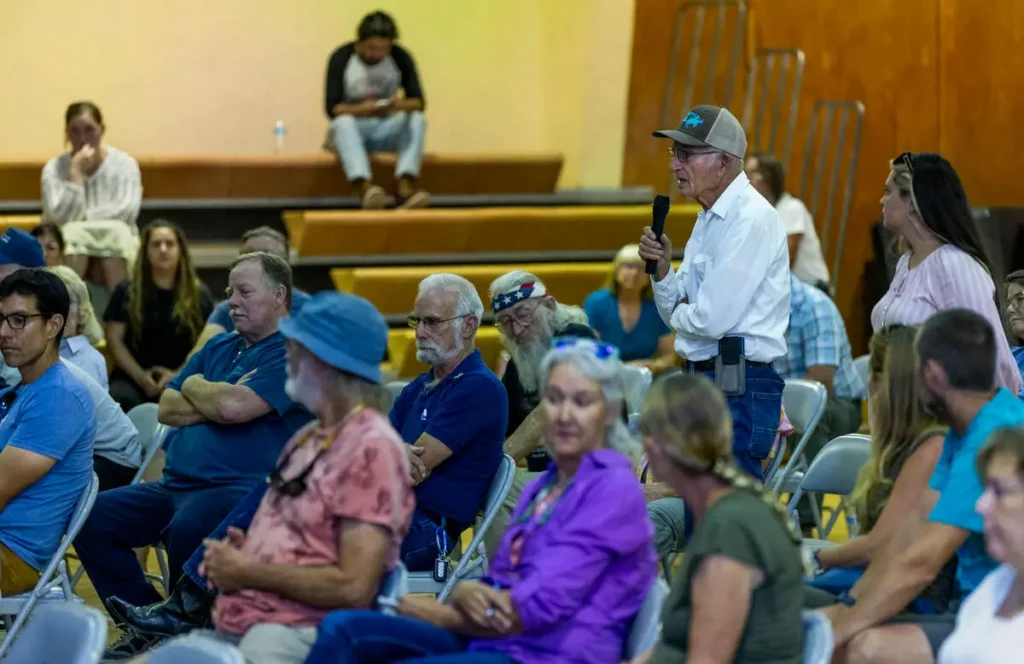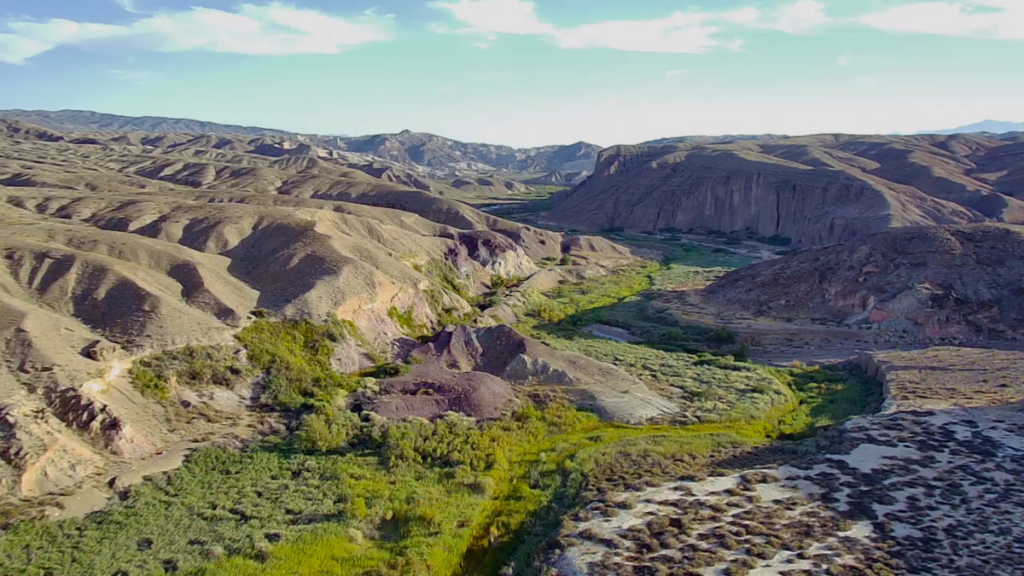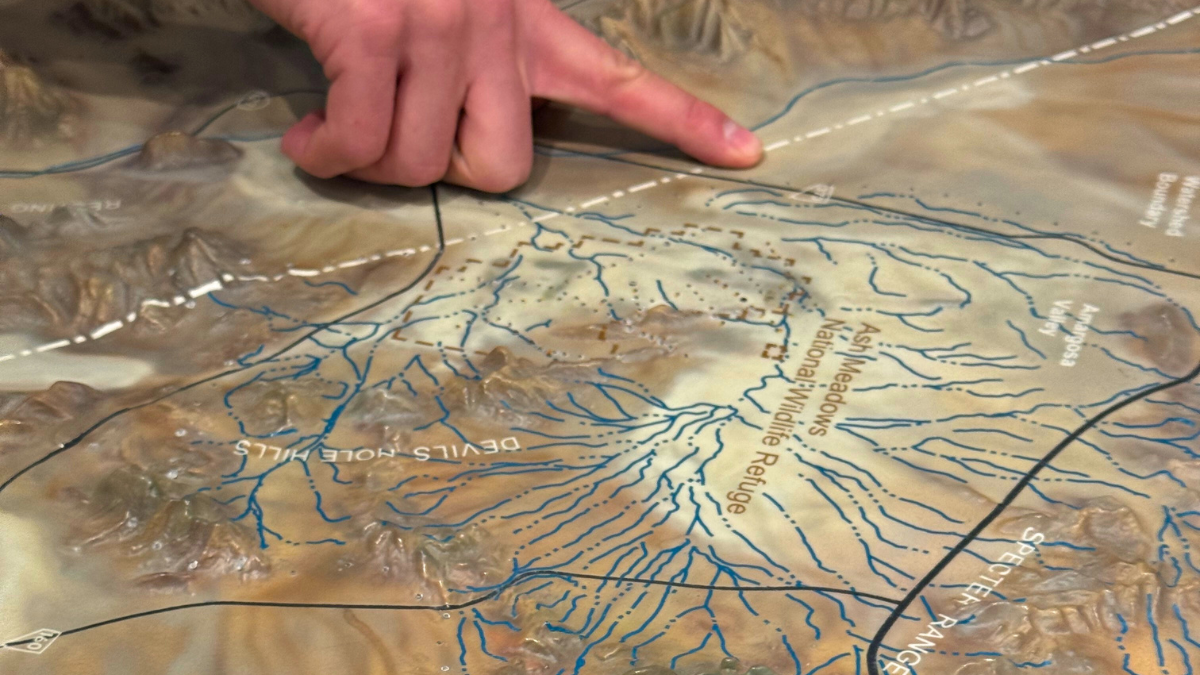By Scott H. Williams
I am a Californian.
In a lot of places that is a dirty word, not least of all in Nevada. I reside in Tecopa, California now, but I’ve lived in Los Angeles and grew up in rural Northern California. Through my work in the Amargosa region and time spent in Nevada, I have begun to learn more about the nuances and complexities of the relationship between the economies and politics of these two neighboring states.
I used to work in industrial remediation in LA. Often, that involved simply digging up contaminated soil and hauling it away by the truckload for “disposal and treatment.” California, having the strictest environmental laws in the U.S., does not allow soil which is contaminated at a level above a certain threshold to be stored anywhere in the state. I would sign manifests for said highly contaminated soil to be trucked over 300 miles from Los Angeles to the U.S. Ecology facility in Beatty, Nevada (recently purchased by Republic Services). Now, in Tecopa, I see the bottom-dump trucks heading north on Highway 127 along the Amargosa River to deliver their loads just over the border in Nevada.

US Ecology facility, located five miles southeast of Beatty, Nevada. From Google Maps.
At a recent town hall meeting in Beatty on the potential effects of the BLM Western Solar Plan on the community, a resident commented, “we already have U.S. Ecology here.”
The Western Solar Plan has made nearly 12 million acres of Nevada BLM land available for solar development, approximately one-third of the total 31 million acres across 11 western states. Amargosa Valley is facing up to 60,000 acres of solar panels both surrounding and within the small but dispersed town. Much of the land between Amargosa Valley and Beatty is open to solar.
Yet, looking at the map of land open to solar development in the Amargosa River Watershed under the new Plan, you will notice a stark line slashing from northwest to southeast, with all of the California side of the map colored gray: excluded from solar development. Here, in one desert with the same amount of insolation — the amount of sunlight that reaches an area — the Nevada side is open for business, while the California side will have virtually no new solar at all.

BLM map from the Western Solar Plan. Public land open for solar development is shown in green, excluded from development in pink, and California DRECP lands are shown in gray.
This is no accident: the 2016 DRECP designated certain BLM lands in California for solar energy, while setting aside large areas for exclusion from solar development, including the Amargosa region. The 2024 Western Solar Plan does not change that. The DRECP was overall a successful plan that preempted the widespread adoption of solar energy by steering development away from the most ecologically sensitive areas of California’s deserts. Given the scale of lands opened up for solar development across the West through this revision to the Western Solar Plan, the benefit of this advance planning is apparent, while the lack of such a plan in Nevada may result in disproportionate solar development in and around rural communities and delicate havens of biodiversity. Given that the majority of the electricity generated in Western Nevada will be sent to California, community opposition to solar development in the region is understandable.
The Amargosa River does not conform to the laser-straight lines that delineate these two states.
Its headwaters are in Nevada, and about two thirds of its downstream run is within California, where it ends in Death Valley. One river connects and supports two geographic areas with distinct laws, economies, and communities. Therefore, Amargosa Conservancy operates in two states in order to conserve and advocate for the full natural watershed.

Wetlands in Oasis Valley, Nevada, where groundwater-fed springs form the headwaters of the Amargosa River north of Beatty.
Working in two states presents significant challenges, but also opens up a unique opportunity for cross-border solidarity and collaboration, a chance to begin to break down old barriers. Our Executive Director Mason Voehl assigns a high priority to the values of environmental justice and community engagement, and his persistent efforts at organizing and outreach to Amargosa residents have produced a diverse coalition united primarily around a shared understanding of the importance of protecting groundwater resources.
The town board of Amargosa Valley in Nye County Nevada, chaired by Carolyn Allen, has allied with Amargosa Conservancy on two fronts that threaten its groundwater. In the spring of 2023, Rover Metals (now Rover Critical Minerals) staked claims in the valley and was preparing to drill into the aquifer just north of Ash Meadows to explore for lithium. The town board decided to support our pressure campaign on the BLM to pause the drilling and require Rover to complete a federal environmental review for the project. After a lawsuit filed by AC and Center for Biological Diversity, BLM conceded to this request. In April of 2024, the town board took this fight one step further by endorsing AC’s proposal for a mineral withdrawal around Ash Meadows.

Amargosa Valley residents questioning Rover Critical Minerals at a town hall with the mineral exploration company in June 2024. From Pahrump Valley Times and L.E. Baskow with Las Vegas Review-Journal.
In September of this year, the Amargosa Valley Town Board co-signed AC’s protest to the BLM’s Western Solar Plan over concern that the plan would allow widespread industrial solar construction around and within the town that could draw down its already stressed aquifer. This is a significant development, because Amargosa Valley once railed against restrictions on groundwater pumping imposed to protect the springs of Ash Meadows.
In March of 2023, Amargosa Conservancy organized a collaborative meeting and workshop, bringing together federal agencies such as BLM and NPS, nonprofit conservation organizations, local tribal representatives, and state and local employees. This meeting launched the Amargosa Basin Collaborative, which is an ongoing working group that has since brought in local leaders from communities on both sides of the state line, including Amargosa Valley and Timbisha Shoshone. In April 2024, AC contributed to an expansion of the annual three-day Devils Hole Workshop to include presentations on research and conservation across the Amargosa River Watershed, called the Devils Hole and Beyond symposium.

Devils Hole and Beyond Symposium, April 2024.
The health of people and their economies is wholly dependent on a healthy natural environment. People live along the Amargosa River because they need its water, the same water that sustains the pupfish, the unique endemic plants, and every other organism found in its riparian zones.
That is why these relatively new alliances between Amargosa Conservancy and rural communities in the watershed are an exciting new cause for optimism. These relationships are also not easy to establish. But by showing up for local residents and continuing to demonstrate that we care about their wellbeing as much as that of the wildlife, we may be able to build a coalition that is stronger and more protective of our shared water resources than was possible without community support.
Watch a short interview with Beatty resident Autumn Arroyo.
This opportunity to break the trend of California conservation working in isolation inspires me personally, as does the passion and dedication that residents of Amargosa communities on the Nevada side of the watershed bring to the fight for their water and environment.
As I strive to contribute to the community here in Tecopa, I have begun to see how this town fits into a system of communities and habitats that have been arbitrarily divided by the border line. It is my hope that Amargosa Conservancy can continue to be an example of how conservation and stewardship work can push beyond borders and embrace a natural, ecology-based geography, so that we can build deeper connections between communities and with the land.

The Amargosa River in Tecopa, California.

